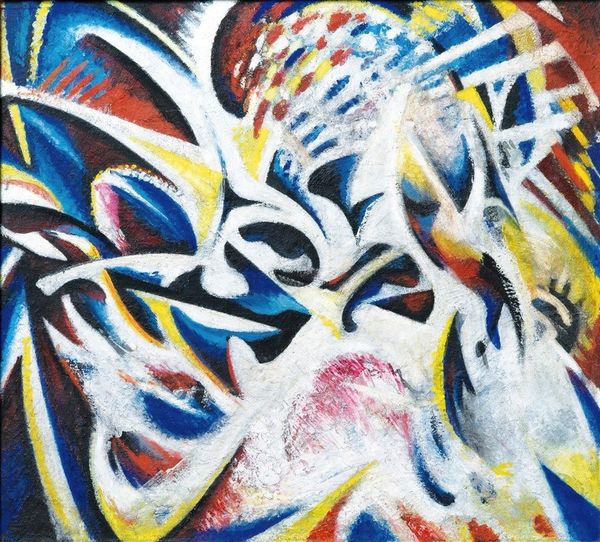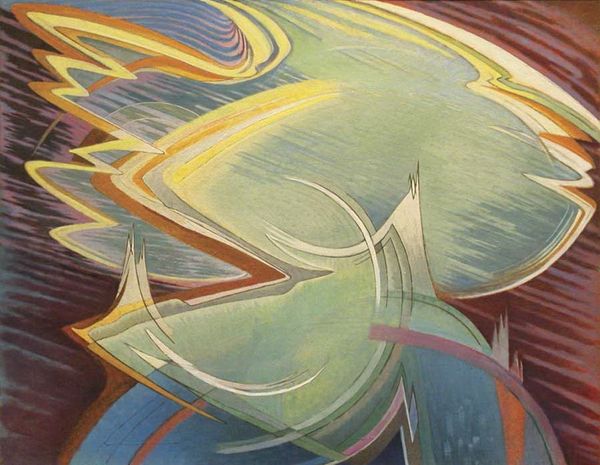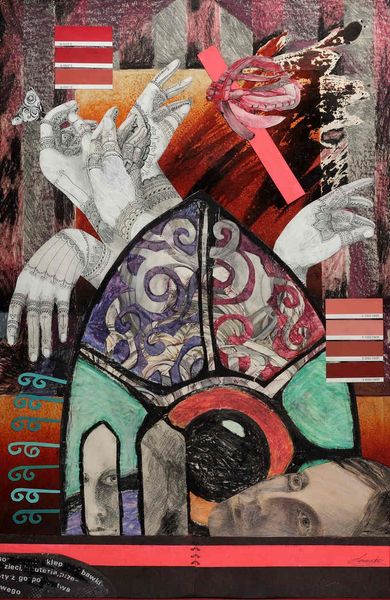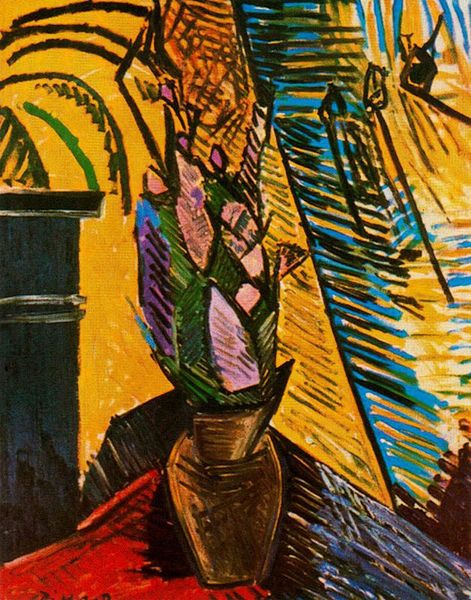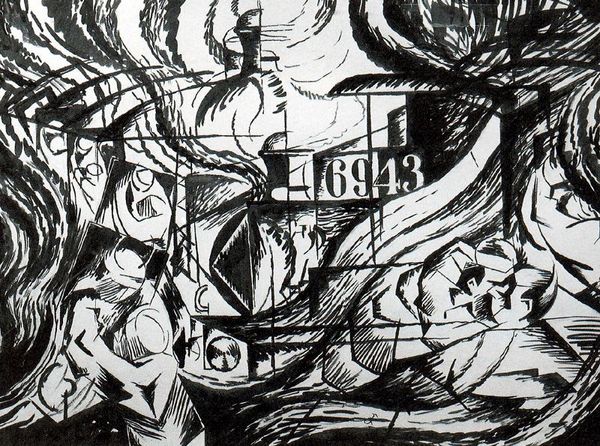
#
rayonism
Copyright: Public domain US
Curator: Here we have Natalia Goncharova’s "Electric Lamp," painted in 1913. Goncharova was a key figure in the Russian avant-garde, and this piece exemplifies her embrace of Rayonism. Editor: Oh, my. It zaps you, doesn't it? I mean, the energy radiating out; it's almost blinding, like staring right at the sun or…well, an electric lamp! You feel that sizzle of modernity, that pulse of the new century? Curator: Precisely! Rayonism, at its core, involved abstracting reality through intersecting lines representing rays of light. Note how Goncharova employs layers of paint and forceful lines to depict not the object itself, but its projected energy. This aligns with the futurist fascination with technology. Consider, too, the availability and adoption of electricity as a source of social and cultural power during this time. Editor: I get a kind of organized chaos. The color palette itself— those assertive oranges, purples, and yellows— they clash but harmonize, almost like electricity short-circuiting, but in a beautiful, controlled explosion. It makes me wonder, what was it like to experience the first electric light, that instant access to illumination on demand? Curator: Indeed. Also, think about the industrial manufacturing that enables not just the lamps, but the paints themselves. These advancements were products of immense social and environmental transformation during the period, reflected even within avant-garde aesthetic pursuits such as these. Editor: Yeah, the lamp isn't just illuminating the room; it's throwing light on the era itself. You can almost hear the hum of the wires, the sizzle of innovation, maybe a little bit of crackling skepticism from the old guard who preferred their candles. Curator: Absolutely, it is that tension between tradition and progress visualized. Considering the political unrest of the era leading to World War One and ultimately revolution, such modern art also served as a testing ground for exploring social change and imagining the future of technology. Editor: This image… it’s pure invention and optimism at play. Makes me almost forget the historical contexts... almost. Anyway, it glows, and not just visually. It practically sings. Curator: Yes. “Electric Lamp” certainly encapsulates the energy of early modernism, forcing us to question the very materials of art and society that were driving its revolutionary spirit.
Comments
No comments
Be the first to comment and join the conversation on the ultimate creative platform.


